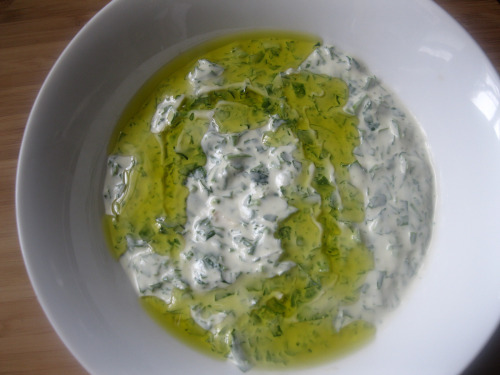brunch
Hummus
Warning – a bit of a silly rant ahead…..
One of my pet peeves is the current fad of calling almost any sort of Mediterranean-looking dip “hummus”. These days, they don’t even need to contain tahini. Pinterest is FULL of pins to recipes for black bean hummus, avocado hummus, zucchini hummus – I am very particular with what I consider hummus. If it does not contain chickpeas, I do not consider it to be ‘hummus’. It’s a dip, probably a very yummy one, but NOT hummus :p In fact, it is due to the explosion of non-hummus hummus recipes that I thought hard about the title of a previous post, Hummus with Parsley . I’d call it Parsley Hummus, but though it is an actual hummus with parsley, I thought calling that might cause people to think it was a Parsley Tahini Dip , without chickpeas (which I also have previously posted 🙂 ) This rant is not regarding those recipes like Artichoke Hummus, that contains a chickpea hummus with the addition of artichoke hearts.
The word Hummus (Arabic: حُمُّص) is the Arabic word for chickpeas. The full name for the bean dip commonly called hummus is actually hummus bi tahini – which means chickpeas with tahini. Yes, I personally consider tahini essential to a good, proper hummus, though there are other people who will also make you a good bowl of hummus without using a drop of tahini.
I’ve posted a couple of hummus variations already, but here is my recipe for a basic hummus. This uses canned chickpeas, but you can use the equivalent amount of soaked dried and cooked chickpeas. It is very good when you have the time to soak and cook dried chickpeas, but if you are short on time, or forethought in planning, canned chickpeas also work. You can use this as a starting point for your own variations. If you like, you can add black beans, avocado, zucchini, or any other flavor you think will taste good, but please, for the love of cupcakes, do not call it hummus if it does not also contain chickpeas.
Okay, now that I have stepped off my hummus soapbox (yeah, that is the most important thing to be passionate about, right?), here it is – simple, plain, glorious hummus:
Hummus bi Tahini
~16 ounce canned chickpeas, drained, reserving liquid
2-3 tablespoons Tahini
1-2 cloves garlic
1 tablespoon Extra virgin olive oil
Juice of half a lemon
1/2 teaspoon Cumin, optional
salt and pepper, to taste
Top with – More extra virgin olive oil for serving, you can also add toasted pine nuts, a few whole chickpeas, some hot sauce, or a sprinkling of zaatar or sumac spice.
Pour chickpeas into blender. Add reserved liquid, up to half the level of the chickpeas.
Add garlic, tahini, olive oil, lemon juice, cumin, and salt and pepper. Blend, adding additional liquid, if needed, to desired consistency.
Spread hummus in serving plate, topping with a generous drizzle of olive oil on top.
Saturday Brunch – Bakdounsiya – Parsley Dip
Bakdounsiya is a common sight in a Levantine mezzeh spread. It is typically eaten with pita bread, just like hummus or any of the other mezzeh dips. It goes very well with grilled meats.
If you thin this out a bit more, it would be a good sauce or dressing to drizzle on top of grilled kofta, kabobs, fish, or falafel.
Bakdounsiya – Parsley Dip
1 cup chopped parsley
4 tablespoons tahini
2 tablespoons yogurt (optional)
juice of 1/2 lemon
1/3 – 1/2 cup water
1 small clove garlic, chopped finely, and mashed
Extra virgin olive oil for drizzling
Chop parsley as finely as possible.
Place in small bowl.
In a separate bowl, mix tahini, yogurt, and lemon juice. Stir until it thickens to a paste.
Add water, a little at a time, stirring till you have a smooth, creamy dip. Add salt to taste, and garlic. Taste to adjust for salt and/or lemon. You want this to lean towards sour.
Add parsley, and stir to combine completely.
Drizzle with extra virgin olive oil to serve, if desired.
Note – you can omit the yogurt for a vegan/dairy-free dip. Also, this is a gluten-free dip, and can be used with any gluten-free cracker or bread.
Saturday Brunch : Fava Bean Dip – Ful
Fava beans (both fresh and dried) are very extensively used in the Mediterranean region, in cooking, salads, and dips. In Arabic (الفول) , it is pronounced fool, and can be spelled ful/fool/foul.
I am choosing to go with “ful”, because well, it isn’t confusing with another, less-tasty, meaning 🙂
It is very nutritious, and very hearty and filling. Fava beans are very high in fiber, and are a good source of lean protein, iron, and folate.
This is a fava bean dip, very simply prepared with lemon juice, garlic, and parsley, as prepared in Palestine. This is traditionally eaten with flatbread or pita.
Note – As Levantine Christians are still fasting for Lent, I thought that it is fitting to note that this is a vegan recipe, and works for those who follow a vegan fast for Lent, as it is so filling and provide great nutrition.
Fava Bean Dip – Ful
14 oz canned fava beans, or the equivalent of cooked dried fava beans
juice of 1/2 lemon
2-3 Tablespoons parsley, chopped
1 small clove garlic
1 Tablespoon extra virgin olive oil
2 Tablespoons reserved liquid
salt to taste
Extra virgin olive oil for serving
Empty the contents of the can of fava beans into a small pot, including liquid. Bring to a boil, allow to simmer for 2-3 minutes over low heat. Take off heat.
Meanwhile, finely mince garlic, add a pinch of salt, and mash to a paste in a mortar and pestle or using the flat side of a knife.
Remove only beans from pot, reserving liquid. Place in a shallow bowl.
Mash with a fork. Add olive oil, garlic, lemon juice, and salt to taste. Stir to combine, adding enough reserved liquid to bring to the consistency of hummus, about 2 tablespoons.
Top with parsley and olive oil to serve.
Manakeesh – Zaatar Pizzas
One of the tastiest things to eat is warm manakeesh with some hot tea. Trust me on this. Make some nice, strong tea and sweeten generously. Enjoy it with this tangy/savory bread.
I tagged this as semi-homemade, because the dough is typically home-made, but when you are short on time, frozen supermarket pizza dough is a good substitute.
I always pick up a couple of package of supermarket frozen pizza dough during my weekly shopping trips- the kind that comes in a small ball. I usually also have one or two as backup in the freezer. We try to do one pizza night per week, varying toppings. It is fast and easy to prepare, and my son loves to help make pizza. Tonight he helped by mixing the oil and zaatar, and spreading it on the dough.
Manakeesh will usually be a little less puffy than this one when it made with the home-made dough. I will feature the home-made dough in a future post.
We have this on weekend mornings or for dinner. There were a few pieces leftover after dinner, and my husband promptly put them away to have for breakfast tomorrow.
Note – you can completely omit the cheese.
To make it a complete meal, put out several of the following small plates: lightly salted sliced tomatoes, sliced cucumbers, Akkawi/Feta/Halloumi cheese, olives, labneh, fried or boiled eggs.
Manakeesh – Zaatar Pizzas
1 lb package frozen whole wheat pizza dough, defrosted and brought to room temperature
4 tablespoons zaatar
1/2 cup extra virgin olive oil
1/2 cup shredded mozzarella or feta or a blend of the two
1/2 – 1 teaspoon sumac (optional)
Preheat oven to 400 F.
Cut dough into two rounds. Roll each one out to about a 10 inch round. Prick with tines of a fork.
Pour olive oil into a bowl. Add zaatar and stir to incorporate completely.
On first round, pour out half the zaatar oil mixture. Spread evenly.
On second round, pour out the rest of the zaatar oil mixture, and spread. Sprinkle cheese on top. Sprinkle with sumac, if using.
Bake 12-15 minutes until dough is done.
Butternut Squash Dip – with garlic and yogurt
While hummus is probably the most recognized Mediterranean dip, there are countless items in the mezzeh spread that are meant to be scooped or sopped up with pita or flatbread.
This is one of those dips. It can be made with pumpkin or any other winter squash, and the method is the same no matter which type you choose. You want a basic proportion of 1 cup cooked, mashed squash to 3/4 cup yogurt. You can adjust yogurt according to how tangy you like it. Of course, you can also increase or decrease the garlic as well. The dip tastes better if you salt the squash during cooking, rather than at the end.
Butternut Squash Dip – with garlic and yogurt
1/2 butternut squash, peeled, and boiled until soft
1 cup yogurt (preferably Greek)
2 cloves garlic, mashed into a paste
Extra virgin olive oil, for drizzling
salt
After squash has finished cooking, place in a bowl and mash with fork. Add yogurt, garlic, and salt to taste, and stir to incorporate completely.
Drizzle with olive oil.
Entered in this week’s #recipeoftheweek, a weekly round up of lovely recipes

